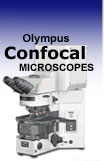 |
 |
 |
|
||||||||||||||||||||||||
 | ||||||||||||||||||||||||
 | ||||||||||||||||||||||||
 | ||||||||||||||||||||||||
Confocal Microscopy Image Gallery
Plant Tissue Autofluorescence Gallery
Hemlock Leaf
Members of the Tsuga genus of coniferous trees are popularly known as hemlocks, their common moniker stemming from the scent of their crushed leaves, which is said to resemble that of the unrelated herbaceous plant Conium maculatum, generally called poison hemlock. Despite their namesake, however, hemlock trees are not poisonous.

The evergreens, which are native to North America and parts of Asia, are quite popular as ornamentals and grow best in locales that are humid and cool. Some species of hemlock have been cultivated as sources of tannin, a group of complex aromatic compounds primarily used for tanning and staining, and others are considered valuable for their wood, which is free from resin, nearly white, and moderate in weight and strength.
Hemlocks are medium to large in size and usually conical in shape. Their brown bark exhibits a reddish or purplish tinge and their needle-like leaves are dark green and blunt. Hemlock branches are slender and often arched toward the ground. Small, pale brown cones form on the tips of the branches and mature in the fall, approximately six months after pollination occurs. Hemlock seeds are only a few millimeters long and contain many resin vesicles.
Several species of hemlocks are considered suitable for bonsai, the aesthetic dwarfing and shaping of trees that was originated by the Chinese but is more commonly practiced in Japan. In general, the Eastern or Canadian hemlock (T. canadensis), the Western hemlock (T. heterophylla), and the Japanese hemlock (T. diversifolia) make the best bonsai specimens. The slow-growing trees respond well to the heavy pruning associated with bonsai and their branches can be gradually coaxed into new positions through the careful use of wires.
Contributing Authors
Nathan S. Claxton, Shannon H. Neaves, and Michael W. Davidson - National High Magnetic Field Laboratory, 1800 East Paul Dirac Dr., The Florida State University, Tallahassee, Florida, 32310.
